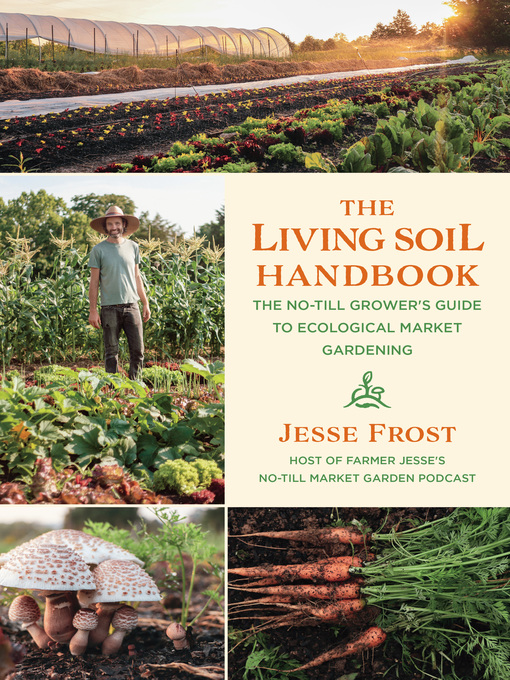Principles and farm-tested practices for no-till market gardening—for healthier, more productive soil!
From the host of the popular The No-Till Market Garden Podcast—heard around the world with nearly one million downloads!
Discovering how to meet the soil's needs is the key task for every market gardener. In this comprehensive guide, Farmer Jesse Frost shares all he has learned through experience and experimentation with no-till practices on his home farm in Kentucky and from interviews and visits with highly successful market gardeners in his role as host of The No-Till Market Garden Podcast.
The Living Soil Handbook is centered around the three basic principles of no-till market gardening:
Farmer Jesse then guides readers in applying those principles to their own garden environment, with their own materials, to meet their own goals.
Beginning with an exploration of the importance of photosynthesis to living soil, Jesse provides in-depth information on:
Throughout, the book emphasizes practical information on all the best tools and practices for growers who want to build their livelihood around maximizing the health of their soil.
Farmer Jesse reminds growers that "as possible" is the mantra for protecting the living soil: disturb the soil as little as you possibly can in your context. He does not believe that growers should anguish over what does and does not qualify as "no-till." If you are using a tool to promote soil life and biology, that's the goal. Jesse's goal with The Living Soil Handbook is to provide a comprehensive set of options, materials, and field-tested practices to inspire growers to design a soil-nurturing no-till system in their unique garden or farm ecosystem.
"[A] practical, informative debut. . . .Gardeners interested in sustainable agriculture will find this a great place to start."—Publishers Weekly
"Frost offers a comprehensive, science-based, sympathetic, wholly practical guide to soil building, that most critical factor in vegetable gardening for market growers and home gardeners alike. A gift to any vegetable plot that will keep on giving."—Booklist (starred review)


